On the 2nd November 2020 His Honour Judge Cadwallader was appointed as a Specialist Civil Circuit Judge based in Liverpool. That means that, for the first time, Liverpool has its own dedicated specialist chancery and circuit commercial Circuit Judge, to add to the tremendous specialist team of Business and Property Court District Judges based in Liverpool. The inauguration of the Business and Property Courts in Liverpool took place at the Liverpool Civil and Family Court on 9th February 2018 in Court 27, in the presence of The Chancellor of the High Court, the Rt Hon Sir Geoffroy Vos, and other members of the senior judiciary (Sir Geoffrey Vos, Mr Justice Popplewell, Mrs Justice O’Farrell, Mr Justice Barling, Mr Justice William Davis).
Liverpool has previously had a court which dealt with business and property issues. The earliest example of this type of court in Liverpool dates from the medieval period. This area of the website explores the history of business and property courts in Liverpool.
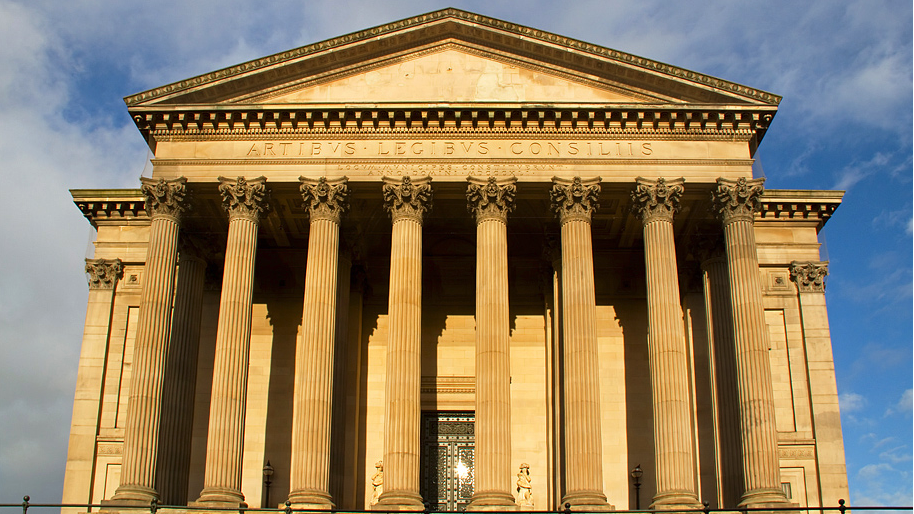
Introduction
Liverpool’s contribution to the development of English and Welsh law is most obviously demonstrated by its famous and influential practitioners. We might select FE Smith as a practitioner in point, with his dramatic and humorous contribution to the political and legal landscape of the early 20th century.[1] Or we might choose his successor on the woolsack, the Earl of Kilmuir, with his troubled tenure as Home Secretary and subsequent career as Lord Chancellor.[2] Alternatively, we might select Kilmuir’s contemporary, Lord Shawcross QC, with his work as Attorney-General and prosecutor at Nuremburg.[3] Finally, we might select Dame Rose Heilbron and her life of legal firsts.[4] It is fair to say that the City’s practitioners are well known across the legal landscape.[5]

The City’s “legal” architecture is also noteworthy. Any traveller exiting the main entrance at Liverpool Lime Street cannot fail to miss the Victorian grandeur of St George’s Hall, sometime home of the Liverpool Court of Assize, where the portico inscription reads “Artibus, Legibus, Consiliis”.[6] The close proximity of County Sessions House,[7] adjacent on William Brown Street, tells the story of movement of the courts around the City, which has most recently culminated in the opening of the Queen Elizabeth Court building on Derby Square in 1984.[8]
Artistic representations on a legal theme and sculpture also abound within the City. These represent the judges mentioned above,[9] or noteworthy academics who have taught at the University of Liverpool.[10]
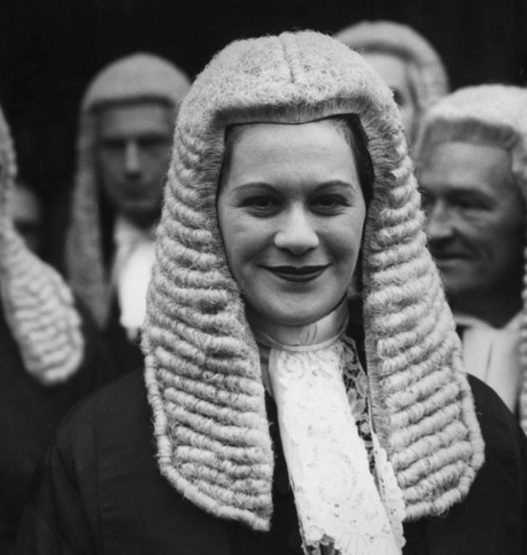
One other major legal contribution by the City of Liverpool has however been largely overlooked. A clue to this unique influence can be drawn from Mr. Mark Cawson QC’s observations in his 2018 address at the opening of Liverpool’s newly created Business and Property Courts. The then chairman of the Northern Chancery Bar Association[11] observed:
“Of course, courts dealing with business and property matters are not new to Liverpool. Liverpool was historically, up to the Courts Act 1971, served by the unique Liverpool Court of Passage, which included an Admiralty Jurisdiction, and by the Chancery Court of the Palatine of Lancaster exercising Chancery Jurisdiction under the Vice-Chancellor. More recently, Liverpool has been an important Chancery District Registry and the location of a Mercantile, and a Technology and Construction Court.”[12]
The Court of Passage of the City of Liverpool – Background
As a contribution to the development of English and Welsh law, particularly aspects of commercial law, the Liverpool Court of Passage deserves to be considered in some depth.[13] [14]
There have been a number of Borough Courts over the course of English and Welsh legal history.[15] They have included the Bristol Tolzey Court, the Maidstone Court of Pleas as well as other courts in, inter alia, Newark, Queensborough, New Romney and Canterbury.[16]
The Liverpool Court of Passage was a Borough Court[17] that existed from the medieval period. It was abolished in 1972. The court was “an ancient Court of Record for the trial of civil actions.”[18] It has also been referred to as a court that “represents the civil jurisdiction of the mediaeval borough court…”[19]
The court’s local jurisdiction was wider than that of the County Court.[20] In terms of genesis we can be certain that the Liverpool Court of Passage existed from the medieval period, at least under that name, as books of record from the period survive.[21] The court had different monikers throughout its history. These included variously, “The Borough Court of Liverpool”, “the Mayor’s Court”, “The Court of Passage of the Borough of Liverpool” as well as “The Court of Passage of the City of Liverpool.” The medieval title of the court was apparently “Court of Liverpool.”[22] The name morphed and changed over time. The first recorded use of the term “Court of Passage” appears in 1595 in the Town Book.[23] The first surviving volume relating to the Court (1707-1713) uses the heading “Court of Liverpool.”[24] In the second volume (1733-1763) proceedings are entered in English with the heading “Court of Passage.”[25]

The derivation of the Court’s name is disputed. There are a number of competing theories for its root. The first set of these relate to the ancient and self-explanatory spelling “paysage”. The first derivation of “paysage” comes from its significance for the Town Clerk.[27] The second “paysage” use refers to a district or landscape.[28] Finally, others have taken the word to mean, “a toll for crossing a river or bridge and upon that construction have asserted that because Liverpool is a sea port, the Court of Passage was originally established in order that such payments might be enforced.”[29]
In more recent times two principal derivations attach to the word “passage”. The first relates to the City Major who presided of the Court of Passage and held sittings in a passage. This rather unedifying location sits uncomfortably with the Court’s later location in the majestic St George’s Hall (as noted above). Perhaps most interestingly for the readers of this article the strongest contender for its name relates to its early insolvency and debt activity. As Layton notes:
“…a writ by the name of “passagio” was issued to the keepers of the port to allow a man to pass over the seas, and the creditors of the man so desirous of leaving the country, in order to prevent him from so doing, had to enter a caveat in the Court against such debtor’s departure.”[30]
Its popularity continued into the early 20th century allowing one commentator to note that, “The most highly regarded…was the Liverpool court of Passage. Though denied equity jurisdiction, let alone its aspiration to become a branch of the High Court, it had prospered under highly regarded judges.”
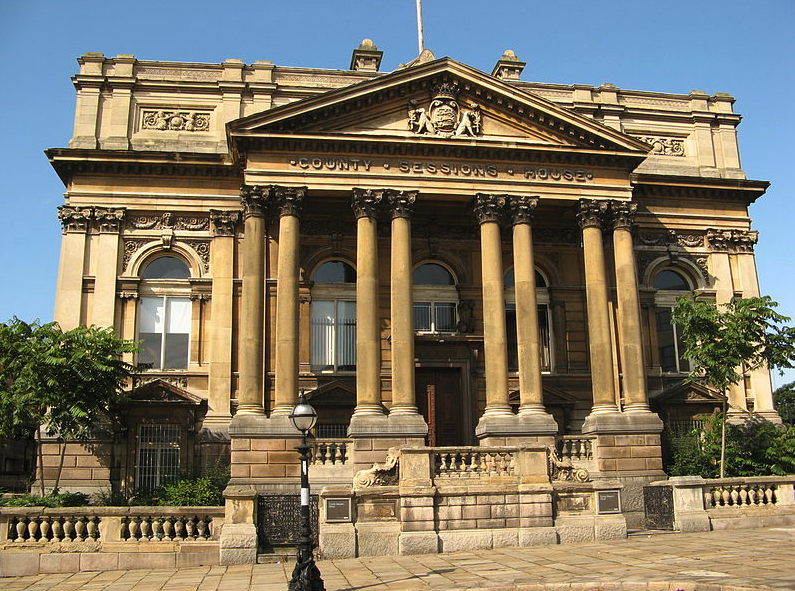
Surviving records of the Liverpool Court of Passage[31]
The records of the Liverpool Court of Passage are currently uncatalogued. Due to various reasons including moving, fire, etc, the surviving records of the Liverpool Court of Passage are greatly diminished. There are records that survive prior to the mid-19th century.
There are two 14th century fragments of rolls of the Court of Liverpool that survive. These are barely legible. These are transcribed[32] and they show that misdemeanours and civil actions were dealt with in the same court. There is also a list of perquisites of the Court of Liverpool for the year 1324/5 in the Lancashire Court Rolls.[33] There are records of the Mayor’s Court for the year 1545/6 which commence with the election of the mayor and officers and then continue with details of civil actions.[34] There are occasional entries of trial of pleas in the early Town Books.[35] In relation to records of the Court there are four main resources, three of which have been catalogued. The Oath Book of the Court of Passage still survives. It contains transcripts of the oaths of all Corporation officials, ca 1790, together with the names of all officials connected with the Court of Passage (including Attorneys since 1786).
There are six volumes of Court Books. These range over four date periods: (1) 1622-28; (2) 1707-1713, (3) 1707-1773, and (4) 1805-1807.
The early court books ((1) August 1707-December 1713, and, (2) July 1733 – December 1763) were deposited by the Town Clerk in 1953.
“The entries in the two volumes give a brief account of proceedings, though somewhat fuller in the second volume which is in English the latter also includes proceedings concerning insolvent debtors. Particulars include names of attornies, plaintiff and defendant, plea, damages claimed, stages of the action and conclusion. Proceedings were usually held before the mayor, bailiff and recorder, sometimes with a jury. Both volumes have a contemporary vellum binding.” (347.9 PAS)
There are five volumes of Docket Books ranging from 1732-1807. There is a volume for 1732-1763.
There are 2 volumes of Plaints Books. These range from (1) 1745-64, (2) 1795-1804.
It has been noted that, “some of these Court and Plaint books may have been associated with Sessions rather than Court of Passage.”[36]
The uncatalogued material, amounting to 150 volumes and 150 boxes of materials, is currently listed and ready for cataloguing.[37]
People and the Liverpool Court of Passage
The Liverpool Court of Passage does not appear to have been some sort of provincial backwater court. A number of successful advocates practised before the court during its long history. As Polden notes these included, “Henry Roscoe [Esq] (1834-6),[38] [Sir] Charles Crompton (1836-52), and Edward James (1852-67).”[39] He continues stating that the court, “…attracted a talented bar, including rising men like Russell and Herschell.”[40] Layton also mention Edward James QC (1852-1897) and Percival A. Pickering QC (1867-1876).[41]
The course of popularity was not always smooth however particularly under the stewardship of particular judges. Polden notes “towards the end of the nineteenth century the Court of Passage fell upon evil days.”[42] This was in larger part due to the quality of the presiding judge. As Polden has argued TH Baylis QC “was a less distinguished judge”[43] during his tenure from 1876 to 1903.
There were other functionaries in the court. These included the office of the Assessor. Sir Charles Crompton, (pictured below) who went on to become a judge of the Queen’s Bench, was Assessor in 1836[44] and Edward James QC was assessor of the court of passage from 1852 until his death in 1867.[45]

One notable Merseyside barrister, John Bigham QC MP, later the 1st Viscount Mersey (pictured below) was involved in the passage of the Liverpool Court of Passage Act 1896 when an Liberal Unionist MP for the Exchange division of Liverpool.[46]
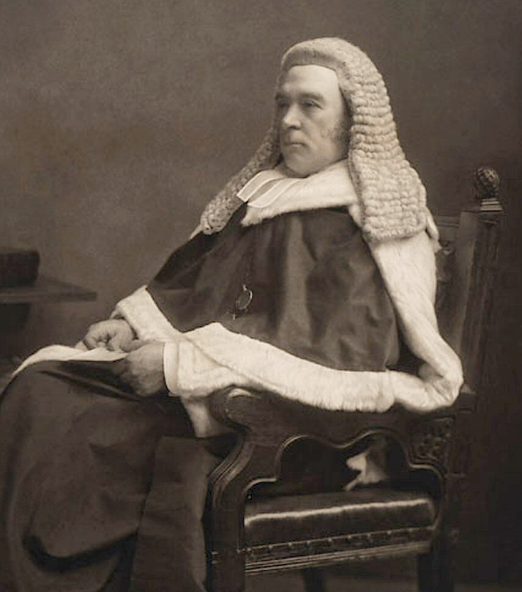
Sir Francis Kyffin Taylor (pictured below) presided over a revival of the court as has been noted by one commentator: “The court soon revived under a long-serving and popular judge W Kyffin Taylor and in 1920 was too well regarded to be touched.”[47] Sir Francis Kyffin Taylor was later ennobled as Lord Maenan.
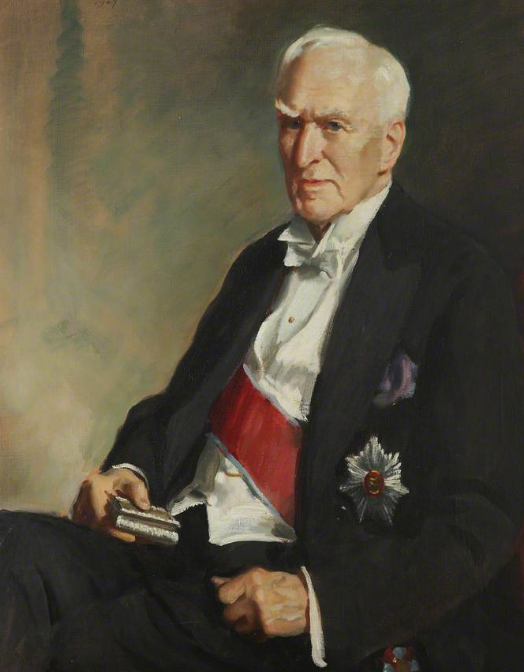
Business before the Liverpool Court of Passage
The sessions of the Court of Passage were held by the Mayor, Recorder and Bailiff immediately after the quarter sessions which had tried criminal cases. The Liverpool Court of Passage shared Admiralty business with the High Court, County Court and Mayor’s court.[48]
The Liverpool Court of Passage had jurisdiction over contract and tort disputes within the Port of Liverpool. To reflect this jurisdiction the Rules of the Supreme Court applied to the Liverpool Court of Passage. These rules were supplemented with rules of practice in the Court of Passage.
Debt
Bankruptcy and general insolvency issues were outside the jurisdiction of the Liverpool Court of Passage. At the time insolvency business was conducted by the Bankruptcy Court, which had a court in Liverpool[49] or the insolvent debtors court.[50] Some eminent practitioners practised in both courts. For example William Brett QC, later Viscount Esher and Master of the Rolls, “was a successful practitioner in the court of passage at Liverpool and the court of Admiralty at Westminster. He also had a considerable bankruptcy practice, and for a time he was revising barrister for a Liverpool district.”[51]
However debt issues did come before the court.
Reported Cases from the Liverpool Court of Passage
As noted above the Liverpool court of Passage had no equity jurisdiction, although it could grant an injunction or appoint a receiver.[52] This led to some interesting early 19th century receivership cases where the Liverpool Court of Passage was involved in the appointment of receivers of the assets of the company because it had jurisdiction over the cause of action.[53] This raises a number of interesting questions. Was the Liverpool Court of Passage exercising an equitable jurisdiction in appointing receivers? Do these authorities show advanced receivership activity prior to the famous case of Re Panama?[54]
In answer to the first question, namely, did the Liverpool Court of Passage have an equitable jurisdiction to appoint a receiver by way of equitable execution, six cases are instructive in attempting to answer this question where the difficulty hinges on unresolved questions on whether the pertinent rules relating to the appointment of receivers[55] applied in the Liverpool Court of Passage.
In King v. Hawkesworth[56]
In Smith v. Couell[57]
In Pryor v. City Officers Company[58]
In Re Shephard[59]
In Levasseur v. Mason[60]
Rex v. Selfe[61]
[1] See further: Law of Property Act 1925. Tribe, J. Vignettes of Liverpool Legal History: (2) FE Smith, the Earl of Birkenhead – Part A: Background and Impecunity? Liverpool Law (Journal of the Liverpool Law Society) June 2017, pp.14-16. See also: Tribe, J. Vignettes of Liverpool Legal History: (3) FE Smith, the Earl of Birkenhead – Part B: Common Law Contribution and a Statue in Liverpool? Liverpool Law (Journal of the Liverpool Law Society), Sept 2017. pp.10-11.
[2] Tribe, J. Vignettes of Liverpool Legal History: (4) David Maxwell Fyfe: The Earl of Kilmuir – the Second Liverpool Lord Chancellor. Liverpool Law (Journal of the Liverpool Law Society), October 2017, pp.12-14.
[3] See further: Tribe, J. Vignettes of Liverpool Legal History: (5) Lord Shawcross QC – A Liverpool Labour Legal Luminary. Liverpool Law (Journal of the Liverpool Law Society), November 2017, pp.12.13.
[4] See further: Tribe, J. Vignettes of Liverpool Legal Histor:y (6) Dame Rose Heilbron – Trailblazing Across the Legal Landscape of Merseyside and Beyond… Liverpool Law (Journal of the Liverpool Law Society), January 2018, pp.??-??.
[5] For a general overview see: A Century of Liverpool Lawyers.
[6] “To Arts, Laws and Counsels”. See further: Sharples, J. Liverpool – Pevsner Architectural Guides. Yale University Press, London, 2004, pp.49-59. (Hereafter Sharples).
[7] See Sharples, pp.64-65. The building was built in 1882-1184 as a court building and it still contains two court rooms and cells. It is now used as the administrative building of the Walker Art Gallery.
[8] This vast concrete complex has 28 court rooms. See further Sharples, pp.149-150.
[9] This artwork includes portraits of: (1) The Earl of Rosslyn (1733-1831) – Lord Loughborough (Artist: Brown, Mather (1761-1831), Artwork type: Painting – oil on canvas 105.4 x 72.4, c.1785-1788, Location: Walker Gallery, Liverpool – REF WAG2578): (2) The Earl of Birkenhead (1863-1940) (Artist: Neale, George Hall (1863-1940), Artwork type: Painting – Oil on canvas 138 x 97.5 (P), Location: Queen Elizabeth Court Buildings, Castle Street, Liverpool – REF: PCF 1 (P): (3) The Right Honourable Sir Donald Nicholls (later Lord Nicholls of Birkenhead) (b.1933-) (Artist: Oliver, Charles William (1911-2004), Artwork type: Painting – Oil on canvas 89.7 x 69.5, Location: The Victoria Gallery & Museum, REF: FA2844): (4) Dame Rose Heilbron (1911-2004) (Artist: Oliver, Charles William (1911-2004), Artwork type: Painting – oil on canvas, 75 x 62.5, Location: The Victoria Gallery & Museum, REF: FA.1820): (5) The Honourable Mr Justice Rigby Swift (Artist: Collinson, Harry (active 1909-1936), Artwork type: Painting – oil on canvas, 106.5 x 86.5 (E), Location: REF: SAHMG.1994.101.
[10] This artwork includes portraits of: (1) Professor FW Maitland (1850-1906) (Artist: Griffiths, David (b.1939-), Artwork type: Painting – Oil on canvas 65 x 49, Location: The Victoria Gallery & Museum, REF: FA 1319. Maitland taught at the University of Liverpool in 1882 and 1883 before going on to become the Downing Professor of the Laws of England in the University of Cambridge): (2) Professor William Lyon Blease (1884-1963) (Artist: Unknown artist, Artwork type: Painting – oil on canvas 82 x 61.5, Location: The Victoria Gallery & Museum, REF: FA3189): (3) Professor David Richard Seabourne Davies (1904-1984) (Artist: Griffiths, David (b.1939-), Artwork type: Painting – Oil on canvas 63 x 49, Location: The Victoria Gallery & Museum, REF: 1320).
[11] NChBA – see: www. http://nchba.org.uk/.
[12] Mark Cawson QC, address at the launch of the Business and Property Court in Liverpool, Friday 9th February 2018.
[13] For an early discussion of the Liverpool Court of Passage see: Layton, JH. The Court of Passage of the City of Liverpool – Guide to Practice with an appendix of specimen bills of costs and statutes. Central Stationary and Printing Co Ltd, Liverpool, 1904. (Hereafter Layton Passage).
[14] See further: W. Peel. The Jurisdiction of the Liverpool Court of Passage, Liverpool, 1909. See also: ThE Liverpool Court of Passage (reprint, 1918, from Transactions of the Historic society of Liverpool and Chester); (1955) 220 LT 236-7. PH Williams. A Gentleman’s Calling, Liverpool 1980 (all cited in Polden).
[15] On the Borough Courts see: Cornish, W & Anderson, S & Cocks, R & Lobban, M & Polden, P & Smith, K (Eds). The Oxford History of the Laws of England. Volume XI 1820-1914: English Legal System. Oxford University Press, Oxford, 2010, pp.850-851 (Hereafter OHEL Borough). See also WEBB MAANOR AND BOROUGH
[16] On local courts in the early modern period see:
[17] More specifically one commentator has argued that the Court of Passage was only a divisional court of the Borough Court of Liverpool (Layton Passage, p.7).
[18] The Court of Passage Procedure Act 1853.
[19] 347.9 PAS (Court of Passage), Liverpool Central Library.
[20] See: Cotton, J. (2004-09-23). Baylis, Thomas Henry (1817–1908), lawyer and author. Oxford Dictionary of National Biography. 2017. Hereafter Cotton Baylis.
[21] Liverpool Central Library, Ref: 347PAS. The library website unfortunately notes: “Other records of the Liverpool Court of Passage, c.19th cent.-1971, including cause books, case papers, judgement books, writ books, fees etc are awaiting cataloguing and currently not available for public consultation..”
[22] 347.9 PAS, Liverpool Central Library.
[23] Twemlow, v.2, p.692.
[24] 347.9.15 PAS, Liverpool Central Library.
[25] 347.16 PAS, Liverpool Central Library.
[27] Layton Passage, p.6.
[28] See further Grocott.
[29] Layton Passage, p.6.
[30] Layton Passage, p.7.
[31] “The early court books (347 PAS/1) were deposited by the Town Clerk in 1953 (Acc. 191). The copy of the oath book (347 PAS/2) was prepared in the Library in 1967. The records that are uncatalogued were deposited by the Town Clerk in 1972 (Acc 2414) and the Liverpool County Court in 1983 (Acc 4006).”
[32] Twemlow MSS, 942 TWE 5.
[33] Lancashire Court Rolls, Lancashire and Cheshire Record Society, v.41, printed by William Farrer.
[34] Molyneux Muniments, Lancashire Record Office, transcript in Twemlow MSS, 942 TWE 10.
[35] Twemlow, JA. Liverpool Town Books, v.1, p.391 n.11.
[36] 347.9 PAS Liverpool Central Library.
[37] Liverpool Central Library, Accession Numbers: 191, 2414, 4006.
[38] ODNB ref: “Henry Roscoe of Liverpool (d. 1836), barrister and legal writer and at his death judge of the court of passage in Liverpool.”
[39] OHEL Borough, p.871.
[40] OHEL Borough, p.871.
[41] Layton Passage, pp.10-11.
[42] cited in Polden OHEL,p.871.
[43] OHEL Borough, p.871. See further: Cotton, J. (2004-09-23). Baylis, Thomas Henry (1817–1908), lawyer and author. Oxford Dictionary of National Biography. 2017.
[44] See: Getzler, J. (2004-09-23). Crompton, Sir Charles John (1797–1865), judge. Oxford Dictionary of National Biography. 2017.
[45] Boase, G. (2004-09-23). James, Edward (1807–1867), barrister. Oxford Dictionary of National Biography. 2017.
[46] Mooney, H. (2004-09-23). Bigham, John Charles, first Viscount Mersey (1840–1929), judge. Oxford Dictionary of National Biography. 2017.
[47] OHEL Borough, p.872.
[48] OHEL Borough, p.717.
[49] For a discussion of uncooperative judges on the Liverpool Bankruptcy Court bench see: Cairns, D. (2004-09-23). Phillips, Charles (1786/7?–1859), barrister. Oxford Dictionary of National Biography. 2017.
[50] (see Lobban treatment and also cite my II earlier work with DG).
[51] See: Hedley, S. (2004-09-23). Brett, William Baliol, first Viscount Esher (1815–1899), judge. Oxford Dictionary of National Biography. 2107.
[52] Judicature Act 1873, ss.89-91.
[53] Judicature Act 1873, ss.89-91.
[54] RE Panama (1870) See also: Kerr & Receivers, Fletcher book on history of receivers, etc.
[55] Order 50 of the Rules of the Supreme Court and sections 89 and 90 of the Judicature Act 1873.
[56] (1879) 4 QBD 371.
[57] (1881) 6 QBD 75.
[58] 1883 10 QBD 504.
[59] (1889) 43 Ch.D 131.
[60] (1891) 2 QBD 73.
[61] (1908) 2 KB 121. See further: Kerr & Hunter on Receivers and Administrators 19th Ed.
Chapter: Chapter 5 – Modes of Appointing a Receiver of the Court
Documents: Chapter 5 – Modes of Appointing a Receiver of the Court
[62] OHEL Borough 851.
